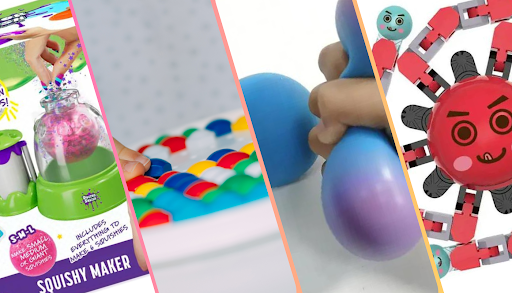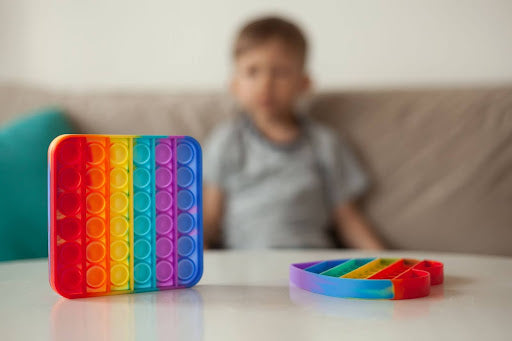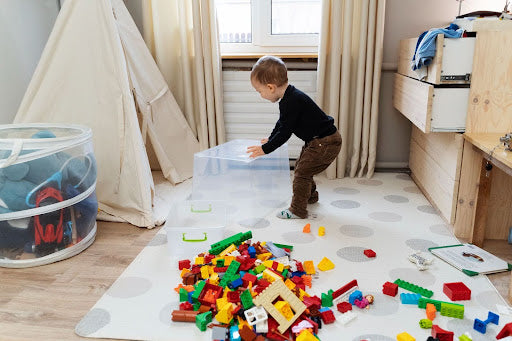
Choosing the Right Sensory Toy for Your Child: A Comprehensive Guide
Have you ever noticed your child seeking out specific textures, fidgeting with objects, or being particularly sensitive to noise? These could be signs that your child thrives on sensory input! Sensory toys can be powerful tools for children of all ages, promoting development, managing emotions, and providing a fun way to explore their senses.

This Aussie Slime Co. guide dives deep into the world of sensory toys, helping you understand the sensory needs of children and choose the perfect playthings to support them.
What Are Sensory Toys Used For?
Sensory toys engage a child's senses – sight, touch, sound, smell, and taste (though taste is rarely used for safety reasons). By providing specific sensory input, these toys can:
1. Promote Development
Sensory play helps with motor skills, cognitive development, and sensory processing.
2. Manage Emotions
Fidgeting with calming sensory toys can help toddlers or children self-regulate during stressful situations, reducing anxiety and promoting focus.
3. Provide Comfort
Sensory input can be incredibly comforting for children, especially those on the autism spectrum or with ADHD.
Types of Sensory Toys

The vast world of sensory toys caters to a variety of sensory needs of children. Here's a breakdown of some popular categories:
1. Tactile Toys
These toys provide a range of textures for exploration, including slime (of course!), putty, squishy stress balls (like our Doctor Squish Squishy Maker!), textured jewellery, and fidget spinners.
2. Auditory Toys
These toys stimulate the sense of hearing with calming sounds like rain sticks or ocean waves, or with fun, clicky sounds from pop-it fidget toys (available at Aussie Slime Co. too!).
3. Visual Toys
These toys capture attention with vibrant colours, mesmerising patterns, and captivating light shows. Think lava lamps, kaleidoscopes, and colour-changing toys.
4. Movement Toy
These toys encourage movement and proprioception (body awareness). Examples include swings, therapy balls, and fidget toys like spinners.
5. Oral Motor Toys
These chewable toys provide sensory input for children who crave oral stimulation. Always choose safe, non-toxic options for this category.
Understanding the Sensory Needs of Children
Every child has unique sensory needs. Some children seek out a lot of sensory input (like Fidgeting, chewing on objects, seeking out rough textures, loud noises, or bright lights), while others are easily overwhelmed by sensory stimuli (avoiding like Covering ears at loud noises, disliking certain textures, being easily startled by touch).
How to Choose Sensory Toys for Autistic Children

There's no one-size-fits-all approach to choosing sensory toys. Also, with so many options, selecting the best sensory toys for kids with ADHD can feel overwhelming.
Here's how to find the perfect match for your child:
1. Observe your child
Pay attention to how they respond to different sensory stimuli. Do they gravitate towards certain textures, sounds, or visuals?
2. Consider their age and developmental stage
Younger children may prefer simpler toys, while older children can handle more complex ones.
3. Think about their sensory needs
Are they seeking or avoiding sensory input? Choose toys that provide the type of stimulation they need.
4. Identify Their Challenges
Does your child struggle with focusing, anxiety, or sensory processing? Identify their specific needs.
5. Talk to Therapists
If your child receives occupational or speech therapy, consult their therapists for personalised recommendations.
6. Safety first
Make sure the toy is age-appropriate and free of choking hazards.
How to Introduce Sensory Toys
Introducing a new sensory toy can be overwhelming for some children. Here are some tips:
1. Start slow
Let your child explore the toy at their own pace.
2. Play together
Show your child how to use the toy and participate in the play.
3. Offer Choices
Provide a variety of sensory experiences and allow your child to choose the toys they find most appealing.
4. Positive reinforcement
Encourage your child's exploration and praise them for trying new things.
Creating a Sensory Play Space

Dedicate a space in your home for sensory exploration. This could be a corner of a room filled with soft mats, textured bins, and calming lighting.
Many Benefits of Sensory Play
Here are the key benefits of sensory toys for children, including:
- Improved focus and attention
- Enhanced motor skills (both fine and gross)
- Reduced anxiety and stress
- Better emotional regulation
- Increased social interaction
- Development of problem-solving skills
- Improved sensory processing
Aussie Slime Co.: Your Sensory Toys Haven
At Aussie Slime Co., we understand the importance of sensory play. We offer a wide range of sensory toys for kids, including pop it fidget toys, squishy dumpling, dr squish squishy maker, plushie online.
Moreover, our popular slime selections provide a satisfying tactile experience with vibrant colours and delightful scents. Plus, the DIY Slime Kits spark creativity, allowing children to experiment.
And the best part? You can now subscribe to Aussie Slime Co. monthly slime subscription box for continued supply of hassle-free sensory fun.
